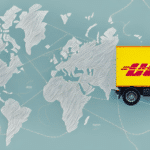How to Ship Large Items Cost-Effectively
Shipping large items can be a significant expense, but with the right strategies, you can minimize costs and ensure your items arrive safely. This guide explores various methods and tips to help you ship large items cheaply without compromising on quality or security.
Choosing the Right Carrier for Large Shipments
Selecting the appropriate carrier is crucial for cost-effective large item shipping. Major carriers like UPS, FedEx, DHL, and USPS offer specialized services for oversized packages.
Factors to Consider When Choosing a Carrier
- Service Options: Different carriers offer various shipping speeds and services tailored to specific needs.
- Cost: Compare rates based on weight, dimensions, and distance to find the most economical option.
- Insurance and Tracking: Ensure the carrier provides adequate insurance and reliable tracking features.
- Special Handling: For fragile or high-value items, choose carriers that offer enhanced packaging and handling services.
Researching and selecting the right carrier can lead to substantial savings and ensure your large items are handled appropriately.
Comparing Shipping Rates and Methods
Understanding how to compare shipping rates and methods is essential for cost-effective large item shipping. Utilize online shipping calculators and consider various shipping options to determine the best fit for your needs.
Using Shipping Calculators
Online shipping calculators provided by carriers allow you to estimate costs based on package weight, dimensions, and destination. This helps in budgeting and comparing different carriers' rates.
Evaluating Shipping Methods
- Ground Shipping: Generally the most affordable option, suitable for non-urgent shipments.
- Air Freight: Faster but more expensive, ideal for time-sensitive deliveries.
- Sea Freight: Cost-effective for international shipments, though slower than air freight.
Balancing cost and delivery time is key to selecting the most appropriate shipping method for your large items.
Packing Large Items for Safe Transit
Proper packing is critical to protect large items during shipping. Utilizing the right materials and techniques can prevent damage and reduce the likelihood of costly claims.
Choosing the Right Packaging Materials
- Sturdy Boxes and Crates: Ensure they can handle the weight and size of your item.
- Protective Wraps: Use bubble wrap, foam, and packing peanuts to cushion fragile parts.
- Water-Resistant Materials: Protect against moisture with plastic or shrink wrap.
Disassembling Large Items
When possible, disassemble large items to make packing easier and reduce the risk of damage. Label all parts and hardware to ensure easy reassembly upon arrival.
Measuring and Securing Items
Accurate measurements are essential for selecting appropriate packaging. Secure items within the package to prevent movement during transit, minimizing the risk of scratches or dents.
Calculating and Reducing Shipping Costs
Accurate cost calculation and strategic planning can lead to significant savings when shipping large items.
Accurate Measurements and Weight
Measure the length, width, and height of your package and weigh it accurately. Carriers use these measurements to determine shipping costs, so precision is vital.
Cost-Saving Tips
- Use Existing Materials: Repurpose boxes and packing materials you already have.
- Purchase in Bulk: Buy packing supplies in bulk to reduce costs.
- Negotiate Rates: If you ship frequently, negotiate with carriers for discounted rates.
- Alternative Shipping Methods: Consider less-than-truckload (LTL) shipping for larger items, which can be more economical.
Implementing these strategies can help lower your overall shipping expenses.
Scheduling and Tracking Your Shipment
Efficient scheduling and active tracking are essential components of successful large item shipping.
Scheduling Pickups and Drop-offs
Coordinate with your chosen carrier to schedule pickups or drop-offs at your convenience. Planning ahead ensures timely shipments and avoids potential delays.
Tracking Your Package
Most carriers provide tracking services that allow you to monitor your shipment's progress in real-time. Utilize these tools to stay informed and address any issues promptly.
Ensuring On-Time Delivery
Communicate any special delivery instructions or time-sensitive requirements with the carrier to enhance the chances of on-time delivery.
Avoiding Common Shipping Mistakes
Preventing common errors can save you time, money, and stress when shipping large items.
Proper Packaging
Ensure your items are securely packed to prevent damage. Avoid using inadequate materials that can't support the item's weight or protect it adequately.
Accurate Labeling
Clearly label all packages with accurate sender and recipient information. Missing or incorrect labels can lead to delays or lost shipments.
Insufficient Insurance Coverage
For high-value items, opt for additional insurance to cover potential losses or damages during transit.
Ignoring Carrier Guidelines
Each carrier has specific guidelines regarding package size, weight, and prohibited items. Adhering to these rules prevents unexpected fees and shipment rejections.
Handling Damage or Loss During Transit
Despite best efforts, damages or losses can occur during shipping. Knowing how to handle these situations is crucial.
Filing a Claim
If your item is damaged or lost, immediately file a claim with the carrier. Provide all necessary documentation, including photographs and receipts, to support your claim.
Preventive Measures
To reduce the risk of damage or loss, use robust packaging, choose reputable carriers, and consider additional insurance for valuable items.
In summary, shipping large items doesn't have to be prohibitively expensive. By selecting the right carrier, packing efficiently, calculating costs accurately, and avoiding common mistakes, you can ensure a cost-effective and secure shipping experience.






















